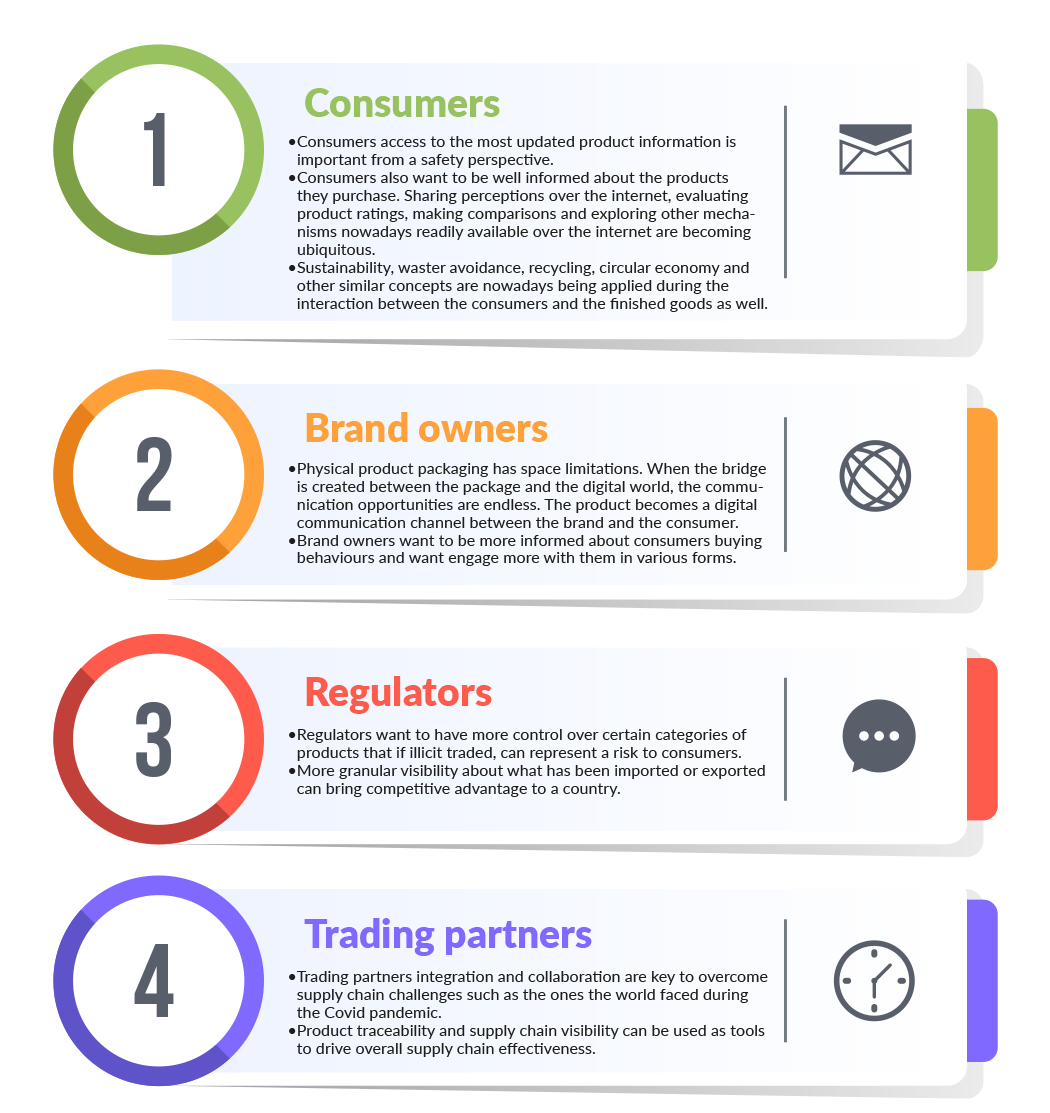Just picture this: you enter a grocery store with a list of products for the next couple of weeks, you fill up the cart and walk down to the check-out station, where a person would then start manually type into the system the description for every single product you picked.
Is the Apple registered as “Apple – Fuji”? “Fuji Apple”? Something else? How would the grocery store handle the product description for the exact same Apple type but coming from multiple suppliers? What about the different variety of Apples perhaps coming from the same supplier (e.g., different sizes, conventional vs. organic, etc.)?
For every single item, besides the time taken to type the product description, the check-out clerk would still need to pick an option over many available on the screen. Too cumbersome? So welcome to a world where barcodes don’t exist.
If we also remove from this scenario the software component of the check-out station, this would be the reality of any shop before June 26th, 1974. This was precisely the day when the first product was commercially scanned, using the barcode recommended in 1973, an year before, by the Uniform Grocery Product Code Council in the US. The first product scanned was a pack of chewing gum. By the way, the choice of scanning a barcode on this type of product was not a coincidence. At that time nobody had been sure that a barcode could be printed on something that small.

The idea that triggered this technology came from a supermarket executive who wished to have an automatic system for capturing product information, as a tool to speed up both the consumer check-out and inventory management. In 2005 the Uniform Grocery Product Code Council merged with EAN International and the name Global Standards One (GS1) started to be used in a worldwide basis. For many decades the global standards used for product identification helped supply chain trading partners to automate processes and gain operational efficiencies. More than 6 billion barcodes are scanned daily all over the world, truly powering the global commerce.
Benefits & other forces pushing innovation forward
When it comes to supply chains operating in a global scale and when we put into perspective the connection between the brand owners and the need to understand consumer buying behaviours, we can highlight multiple forces that are reshaping our environment, regardless of the industry sector, in the last decade.
These forces can also be distributed across 4 different actors, as shown below:
A barcode under the context of these driving forces is not just a component into the overall equation, but the cornerstone, the foundational element that makes everything possible.
A 1D barcode has some known technical limitations. A 2D barcode brings a lot more to the game. Even the first 2D barcode was also invented in 1974, it is becoming over the last few years the main ‘actor’ of the transformation we are witnessing!
Why 2D barcodes?
Before digging into the advantages of 2D barcodes, it is worth to mention that the evolution of equipment and software solutions in general, along with more flexible IT infrastructure options, increase of internet bandwidth and global standards, all of them contributed to a more mature landscape in terms of digital interoperability.

From a product identification perspective, smart sensors using technologies such as Bluetooth Low Energy (BLE), Radio Frequency Identification (RFID) and Near Field Communication (NFC) are commonly used for many applications. They are easier to read, but typically harder to implement and more costly to maintain. The decision about the usage of different technology options has always to be linked with the use cases context and benefits expected.
The 2D barcodes have some advantages over other forms of product identification:
- Simplicity: Consumers are familiar with smartphone scanning, it is a behaviour massively adopted, globally.
- Redundancy: A 2D barcode in most cases can be scanned even in situations where it is scratched, marked through or ripped.
- Data capacity: It can hold much more data than a conventional 1D barcode, and much more data than some smart sensors.
- Smaller: They are much smaller than a 1D barcode, and can save space on the package.
- Real-time information: The product attributes encoded into the 2D barcode are instantly available, and don’t require access to internet and databases.
- Mobile couponing: The days with paper coupons are gone! Digital coupons read by a buyer’s smartphone or tablet is a game changer.
The part 2 of this article will cover many ideas of use cases that can be explored, as well as the main building blocks for a successful implementation of a 2D strategy for your company. Stay tuned!


